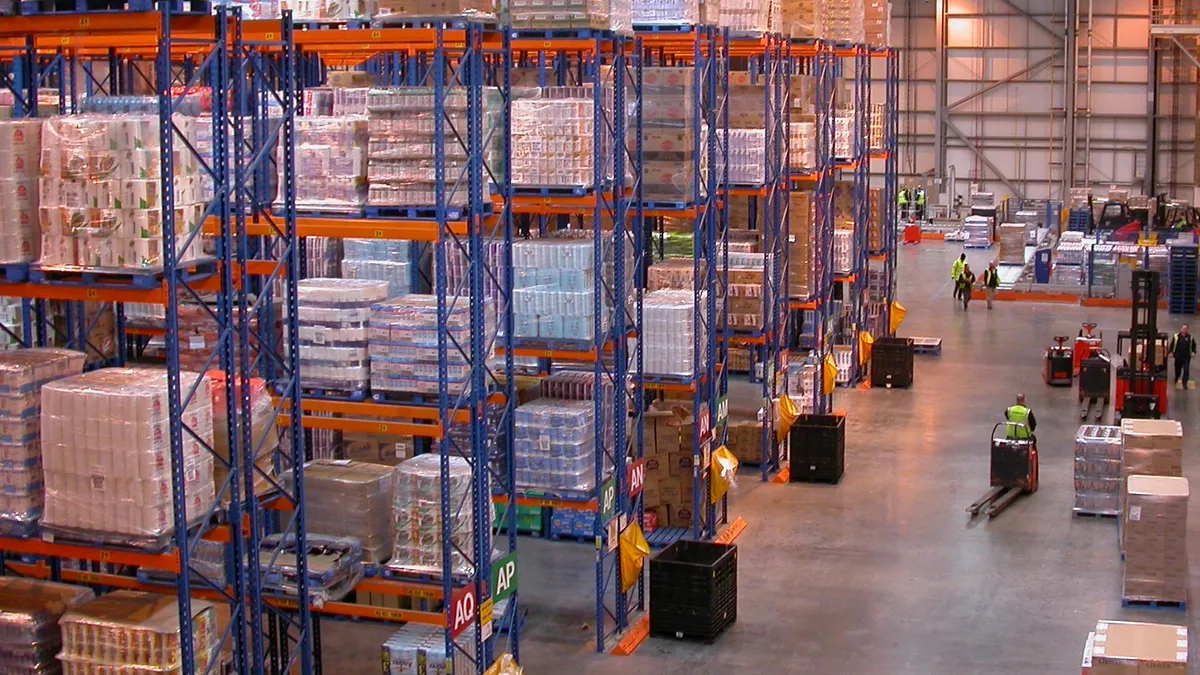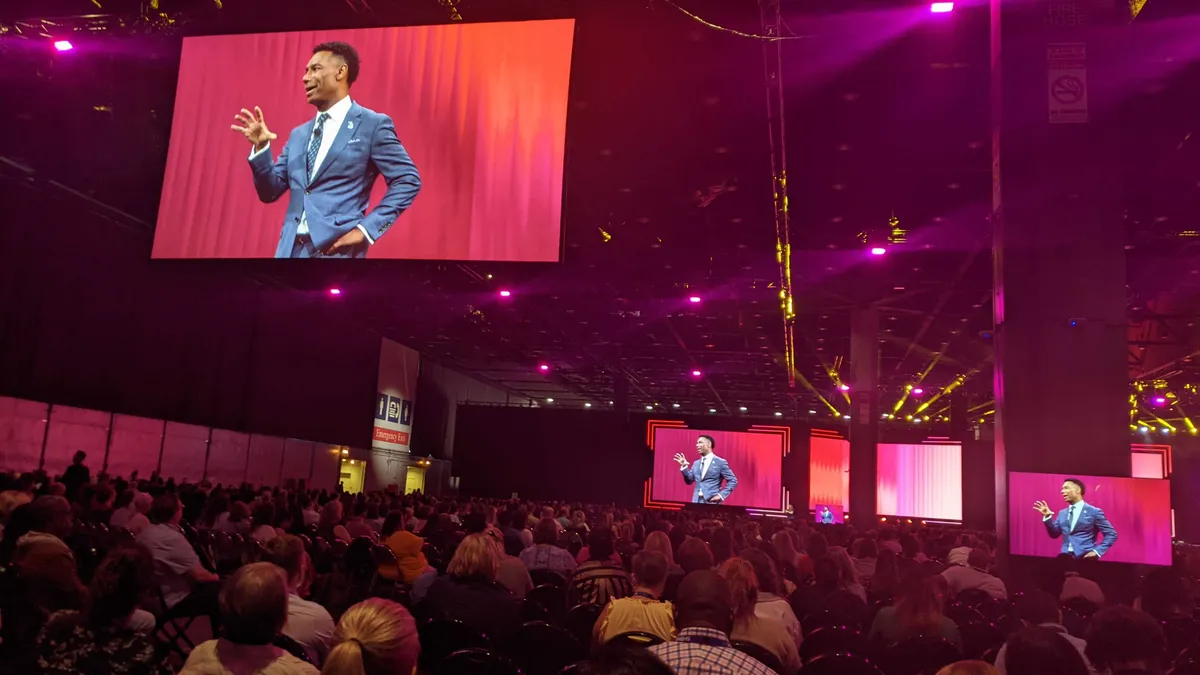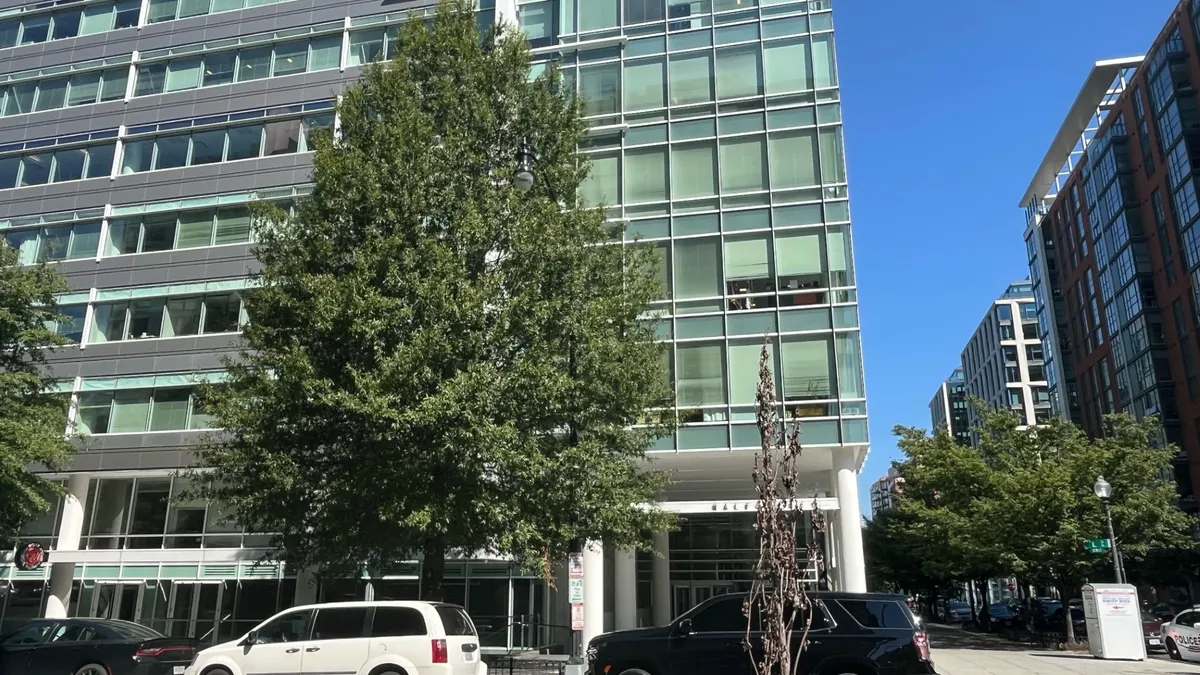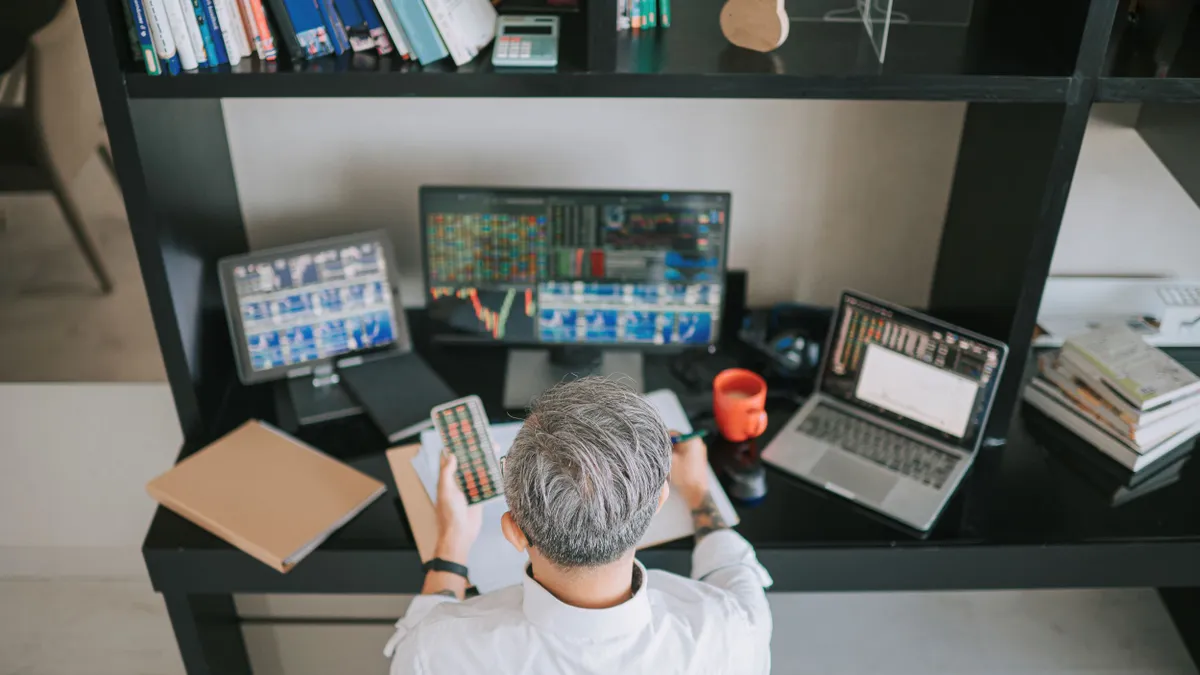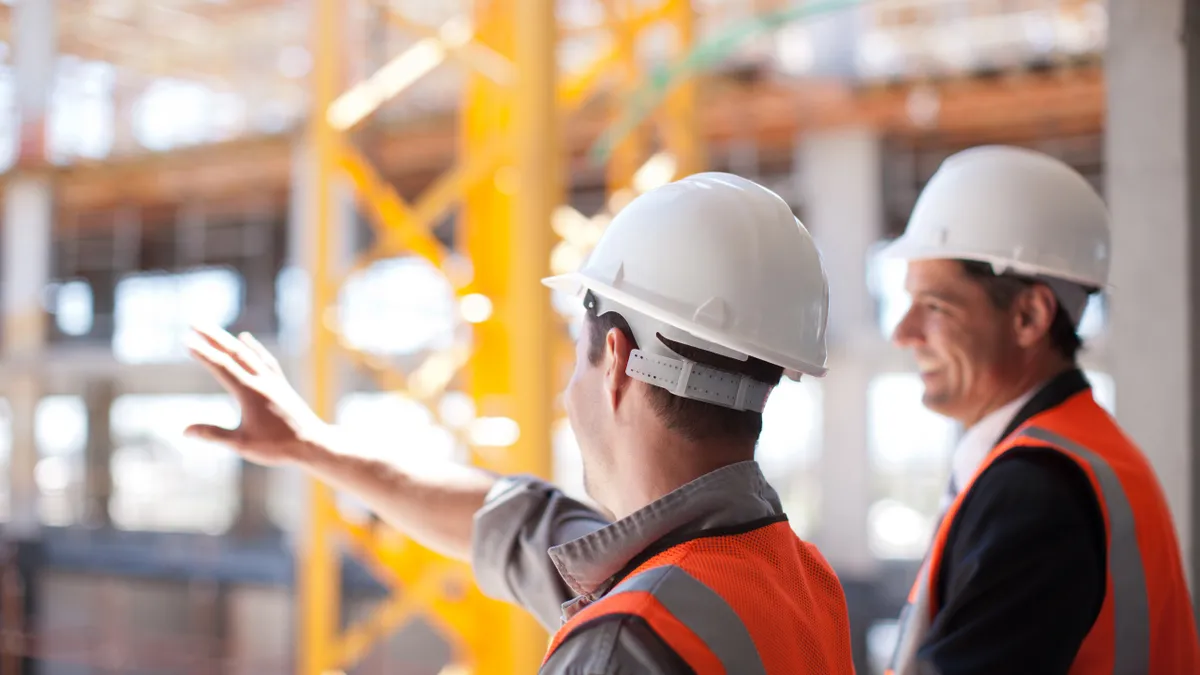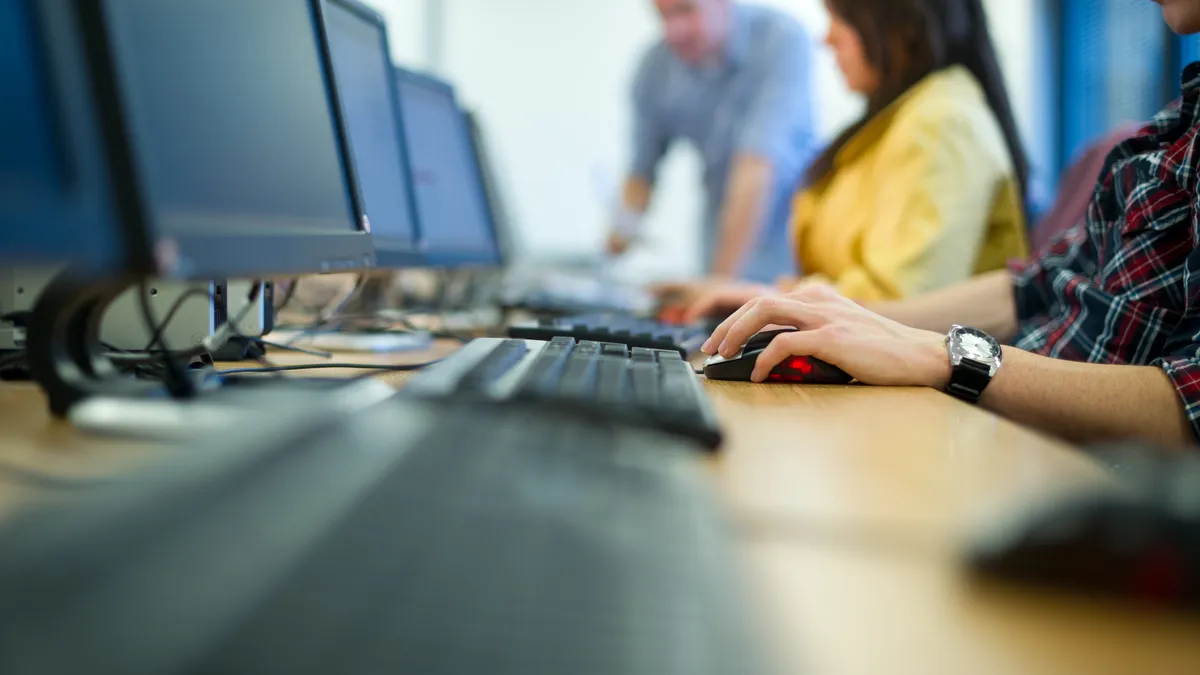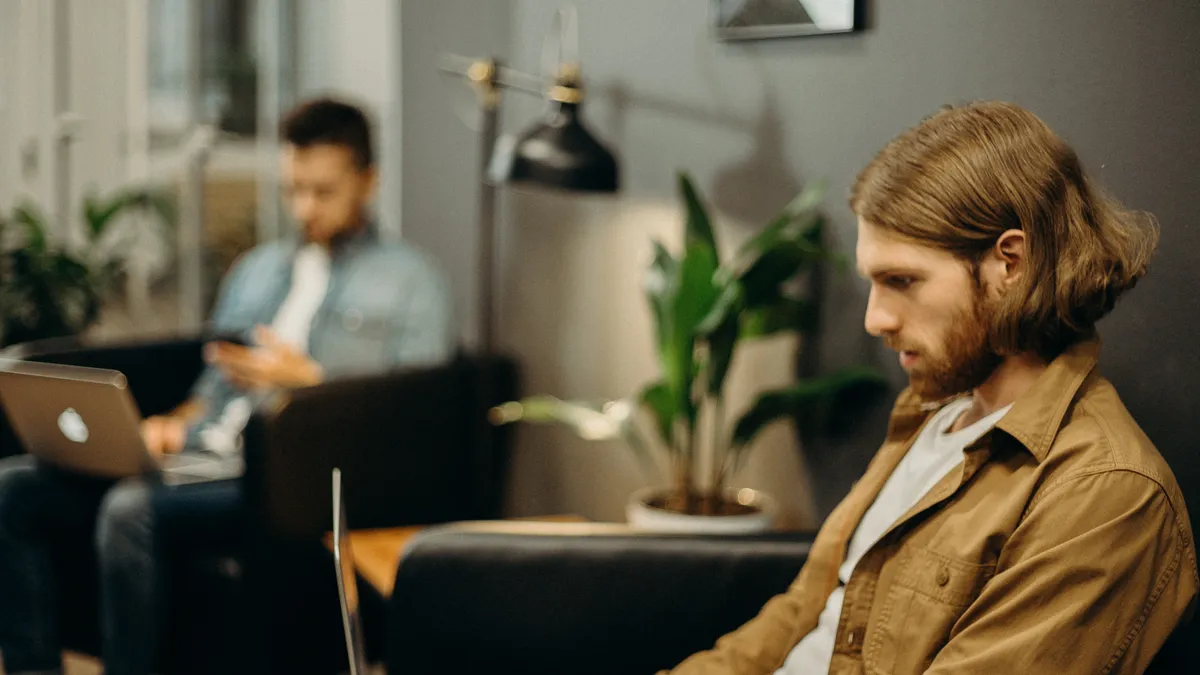As warehouse and factory owners ponder how to reopen their facilities while keeping workers safe, wearables have emerged as potential solution. Could RFID-enabled goggles buzz workers if they get too close to one another other? Could a wristband provide biometric feedback to let a worker know if he or she might be sick?
"This is a fertile area of consideration," J.P. Gownder, VP and principal analyst at Forrester, told Supply Chain Dive in an interview. He predicts that in a year, a proliferation of both wearables and personal protective equipment (PPE) will be used in combination to keep workers on the job — and safe.
"People need to think outside the box a little bit and use innovation to overcome this," he said. "We're unlikely to have a vaccine [any time soon], and millions of front line workers need to keep the world moving. Companies need to be proactive."
Get too close, get buzzed
One leading solution — popular because it already exists — is wearables that alert workers when they get too close to each other, Albert Titus, chair of the department of biomedical engineering at the University at Buffalo, told Supply Chain Dive in an interview. There's already "a fair amount of [Internet of Things] going into worker safety in manufacturing plants and warehouse handling," he said. These kinds of wearables alert a worker if they get too close to something dangerous, like a live power line.
Proxxi already makes such a device. The Canadian company created its Proxxi band to "keep workers safe from electrical contact injury and electrocution," Campbell Macdonald, founder and CEO of Proxxi, told Supply Chain Dive. Proxxi customers are primarily construction and utility companies, and electrical contractors.
"People need to think outside the box a little bit and use innovation to overcome this."

J.P. Gownder
VP and Principal Analyst, Forrester
Macdonald said when the COVID-19 outbreak took hold, customers started asking if the bands could instead communicate with each other to sense if another band – on another worker's arm – is closer than six feet.
That led to the development of Halo. In addition to letting workers know if they're getting too close to each other, the band can also be used for contact tracing in the event that an employee finds out they've been exposed to, or test positive for, the virus. Macdonald said the company has already sold out of its initial run of 5,000 Halo units (with a minimum order of 100 units per company) and is scaling manufacturing to meet demand. Each band costs about $100.
Ford is currently testing watch-like wearables that buzz workers when they get too close to each other, which was first outlined in Bloomberg.
"Ford and the UAW are working closely to identify different ways to keep our people safe while they are at work," Kelli Felker, global manufacturing and labor communications manager at Ford Motor Company, wrote Supply Chain Dive in an email. "This is a very small pilot using a dozen volunteers at one manufacturing facility making personal protective equipment for medical personnel and first responders."
Titus said this technology doesn't need to be limited to the wrist either. Helmets goggles, ear protection, employee badges and even boots worn on the job can become wearables for this purpose.
What about privacy?
While constantly monitoring employee health has been raised as a potential use for wearables, it's also a violation of the Americans With Disabilities Act, Bob Nichols, partner leading the labor and employment practice at Bracewell LLP, told Supply Chain Dive.
Under the act, "you can't monitor health conditions or biometric conditions of your workforce," he said, though that may change. Normally, the act includes temperature checks under that umbrella. But in March, the U.S. Equal Employment Opportunity Commission issued guidance that, for right now, employers can measure body temperature, because a fever is a common symptom of COVID-19. Nichols said that's mostly happening before employees enter a warehouse or manufacturing facility.
"If we go the route of institution wearables, how far can it go? What are the laws to protect workers and how will the data be used?"

Ifeoma Ajunwa
Assistant Professor of Labor Relations, Cornell
Rules concerning biometric readings taken by wearables could be further relaxed in the future. "We don't know how far this will go," he said.
Ifeoma Ajunwa, assistant professor of labor relations at Cornell's ILR School and author of the upcoming book The Quantified Worker, has raised the alarm that COVID-19 could be an excuse for employers to deploy wearables with capabilities beyond what could reasonably keep them safe.
"There are no laws saying where the wearable can be used," she told Supply Chain Dive in an interview, pointing to a 2018 Amazon patent for an Ultrasonic Bracelet and Receiver for Detecting Position in 2D Plane.
Amazon's creation is a wristband that, according to its patent, would save time locating items in warehouses and increase productivity. It would also monitor and, if a worker goes to the wrong bin, let them know via the wrist band, which buzzes.
"How strong is this buzz? Is it painful? There's all these unanswered questions," Ajunwa said. "If we go the route of instituting wearables, how far can it go? What are the laws to protect workers and how will the data be used?"
This story was first published in our weekly newsletter, Supply Chain Dive: Operations. Sign up here.


